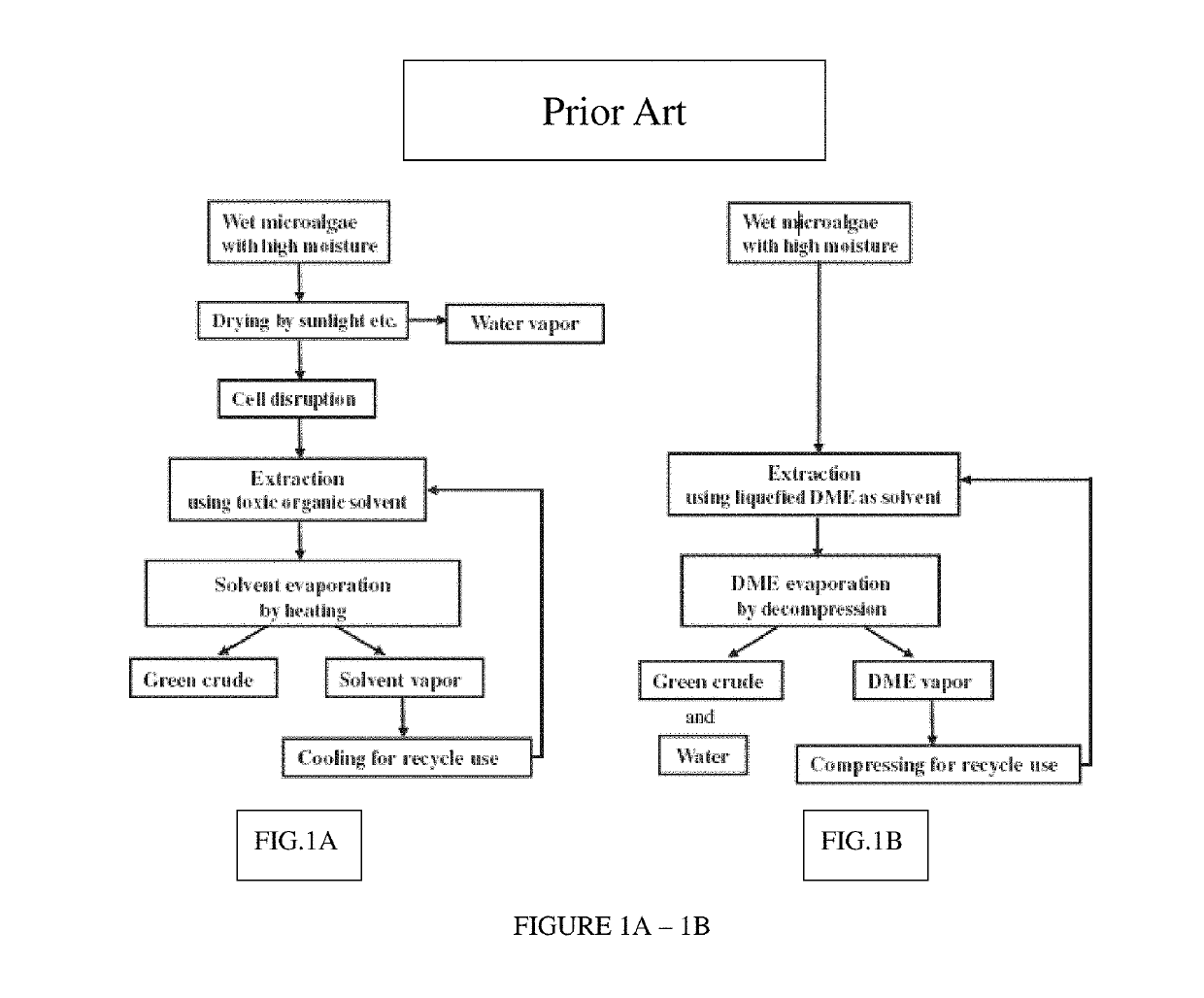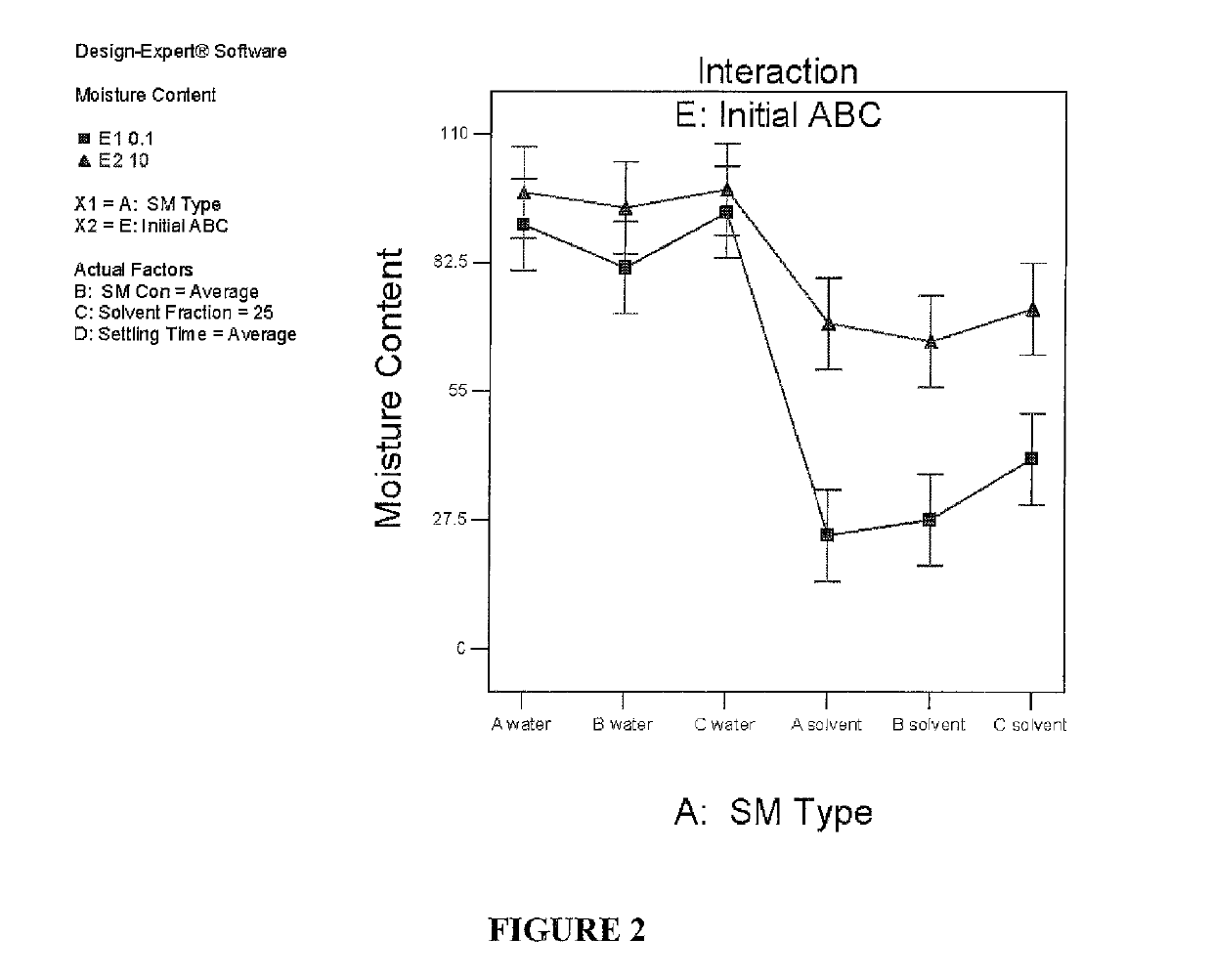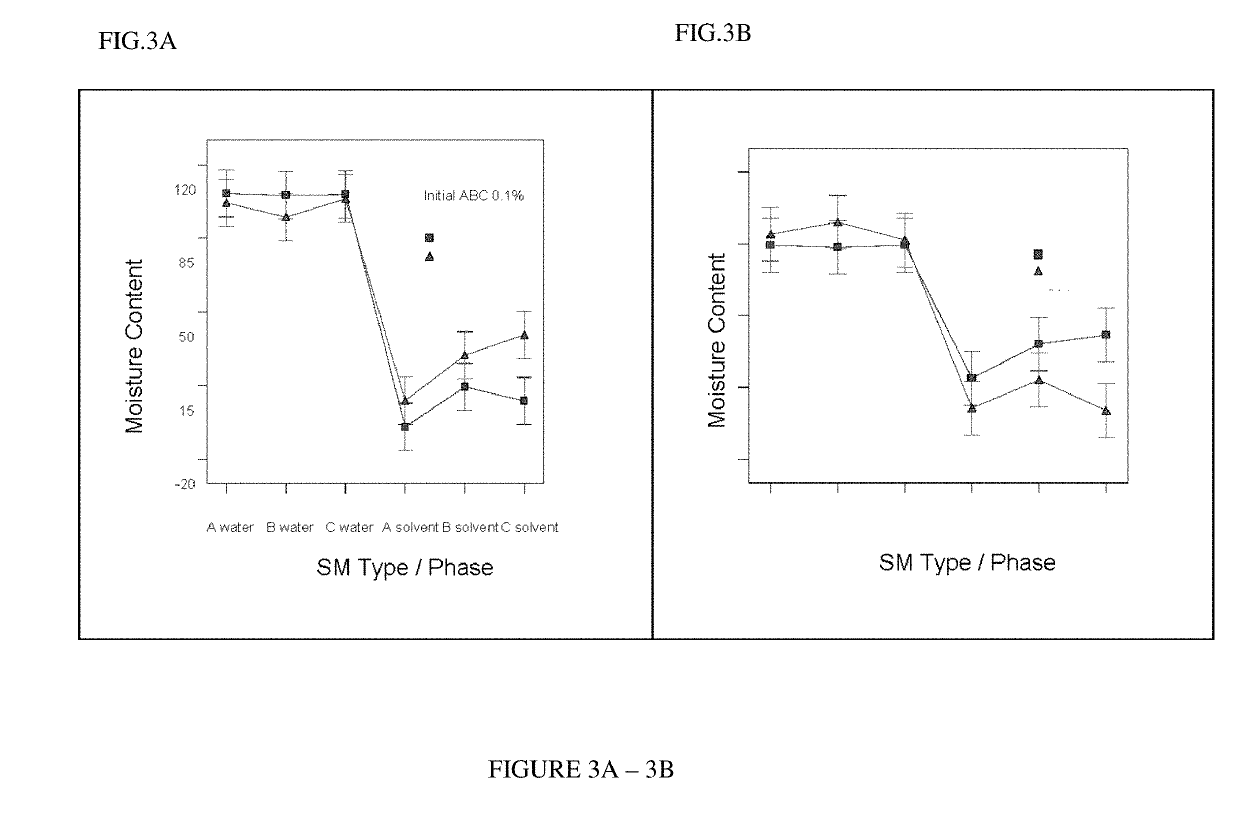Moisture displacement and simultaneous migration of surface-functionalized algae from water to an extraction solvent using ionic polyelectrolytes
a surface-functionalized algae and extraction solvent technology, applied in the field of microorganism and algal cell processing, can solve the problems of affecting the economic viability of microalgae metabolites, affecting the efficiency of microalgae dewatering, and affecting the industrial-scale processing of microalgae metabolites
- Summary
- Abstract
- Description
- Claims
- Application Information
AI Technical Summary
Benefits of technology
Problems solved by technology
Method used
Image
Examples
example 1
Materials and Methods
Microorganism and Culture Condition
[0134]Nannochloropsis oculata was selected for the investigation. The composition of the cultivation medium comprised a limited amount of nitrogen to provide growth stress to increase the production of oil in the algal cells. Standard cultures were grown in outdoor open pond raceway facilities for a period of 14 days. At the end of the growing phase, algal cells were concentrated by centrifuge from approximately 0.1% to 10% v / v final concentration. The 10% v / v algal concentrate samples were transported and transferred into 1 liter bottles and maintained at 42 degrees C. until used.
Experiments
[0135]Characteristics of the process were studied by investigating combinations of the following parameters: Algal surface modifier type, algal surface modifier concentration, solvent-to-broth broth ratio, settling time, and initial algal broth concentration. All tests were conducted in 30 ml glass vials (outer diameter=25 mm and height=95 ...
example 2
Methodology
[0139]Nannochloropsis oculata algal samples that have been subjected to nitrogen deprivation for increasing lipid content were obtained from algal culturing facility in Pecos, Tex. Lipid content of the samples is around 12% (w / w dry basis). These samples were concentrated to 22% TSS (Total Suspended Solids) using centrifugation, prior to shipping using centrifugation. Upon arrival, samples were refrigerated at 18° C. until used.
[0140]PolyDADMAC (Sigma Aldrich) with three different molecular weights (High: 400,000-500,000, Medium: 100,000-200,000 and Low: <100,000) were used as the surfactant. All surfactant samples were diluted to 20 g / l solid content using deionized water for ease of transferring and to increase the measurement accuracy.
[0141]Algal samples were diluted to 10% TS S using deionized water before the experiment. 10 ml of the 10% TSS algal sample was transferred to a 30 ml screw cap vial and 500 ml surfactant was added to the algal sample. After vortexing it ...
example 3
Methods
[0154]1. Required amount of polymeric / oligomeric / monomeric cationic electrolytes with hydrophobic ligands / residues (such as poly / monomeric DADMAC) are added to algal water and mixed vigorously using a vortex mixer.[0155]2. The water-immiscible solvent is added to above sample and mixed thoroughly.[0156]3. The system is allowed to stand undisturbed to promote separation. The electrolyte-bound algae are observed to migrate from aqueous phase to the immiscible solvent phase.[0157]4. After the system reaches equilibrium, the two phases are separated carefully to avoid mixing (of the phases). The water phase is carefully separated from the hexane phase using a micropipette, syringe or a separatory funnel and used for gravimetric analysis.[0158]5. Dilution of the polymer first in water and adding to algal suspension is done to ensure polymer dispersion to improve surface coverage of polymer on algae.[0159]6. Adequate surface coverage of polymer can be ensured by changing the electr...
PUM
| Property | Measurement | Unit |
|---|---|---|
| migration time | aaaaa | aaaaa |
| concentrations | aaaaa | aaaaa |
| pH | aaaaa | aaaaa |
Abstract
Description
Claims
Application Information
 Login to View More
Login to View More - R&D
- Intellectual Property
- Life Sciences
- Materials
- Tech Scout
- Unparalleled Data Quality
- Higher Quality Content
- 60% Fewer Hallucinations
Browse by: Latest US Patents, China's latest patents, Technical Efficacy Thesaurus, Application Domain, Technology Topic, Popular Technical Reports.
© 2025 PatSnap. All rights reserved.Legal|Privacy policy|Modern Slavery Act Transparency Statement|Sitemap|About US| Contact US: help@patsnap.com



